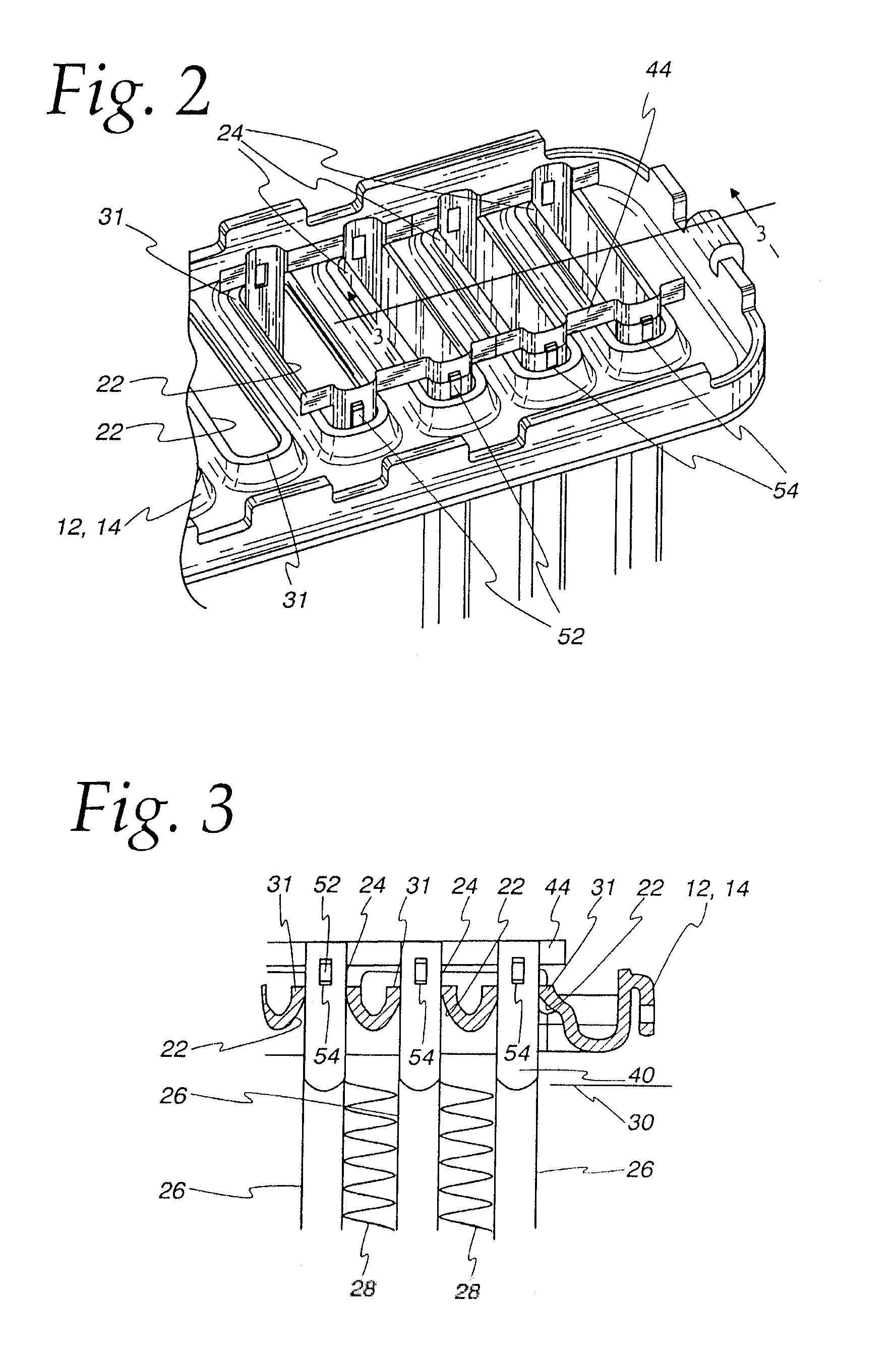Thermal cycling resistant tube to header joint for heat exchangers
a technology of heat exchangers and tubes, applied in the field of heat exchangers, can solve the problems of dimensional changes in tubes and headers, failure of heat exchangers, and high undesirable failures, and achieve the effect of reducing material requirements and increasing the thermal cycle life of such heat exchangers
- Summary
- Abstract
- Description
- Claims
- Application Information
AI Technical Summary
Benefits of technology
Problems solved by technology
Method used
Image
Examples
Embodiment Construction
[0038]Exemplary embodiments of the invention will be described herein in the context of heat exchangers generally and no restriction to any particular use of the heat exchanger is intended except insofar as a expressly stated in the appended claims. However, it is to be noted that the invention can be utilized with its greatest efficacy in heat exchangers employing flattened tubes of relatively large minor dimension as for example, charge air coolers. Nonetheless, the invention may also usefully be employed in heat exchangers intended for other uses and having tubes with a relatively small minor dimension as, for example, vehicular radiators. The invention can be employed with flattened tubes of both the so-called fabricated type or the extruded type. Fabricated tubes are typically formed of fairly thin strip of metal formed upon itself with a welded seam and the greatest benefit of the invention is achieved when used with fabricated tubes. Nonetheless, no limitation to fabricated t...
PUM
| Property | Measurement | Unit |
|---|---|---|
| length | aaaaa | aaaaa |
| length | aaaaa | aaaaa |
| length | aaaaa | aaaaa |
Abstract
Description
Claims
Application Information
 Login to View More
Login to View More - R&D
- Intellectual Property
- Life Sciences
- Materials
- Tech Scout
- Unparalleled Data Quality
- Higher Quality Content
- 60% Fewer Hallucinations
Browse by: Latest US Patents, China's latest patents, Technical Efficacy Thesaurus, Application Domain, Technology Topic, Popular Technical Reports.
© 2025 PatSnap. All rights reserved.Legal|Privacy policy|Modern Slavery Act Transparency Statement|Sitemap|About US| Contact US: help@patsnap.com



